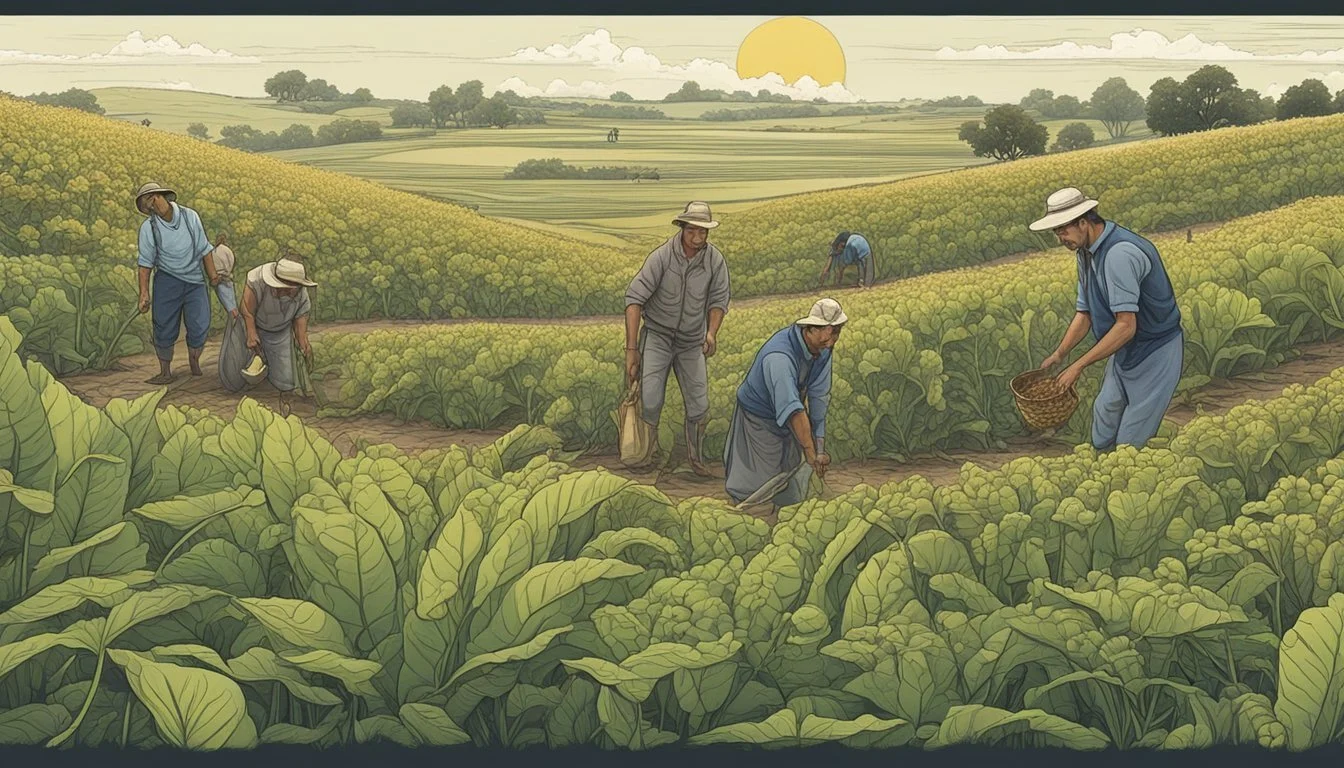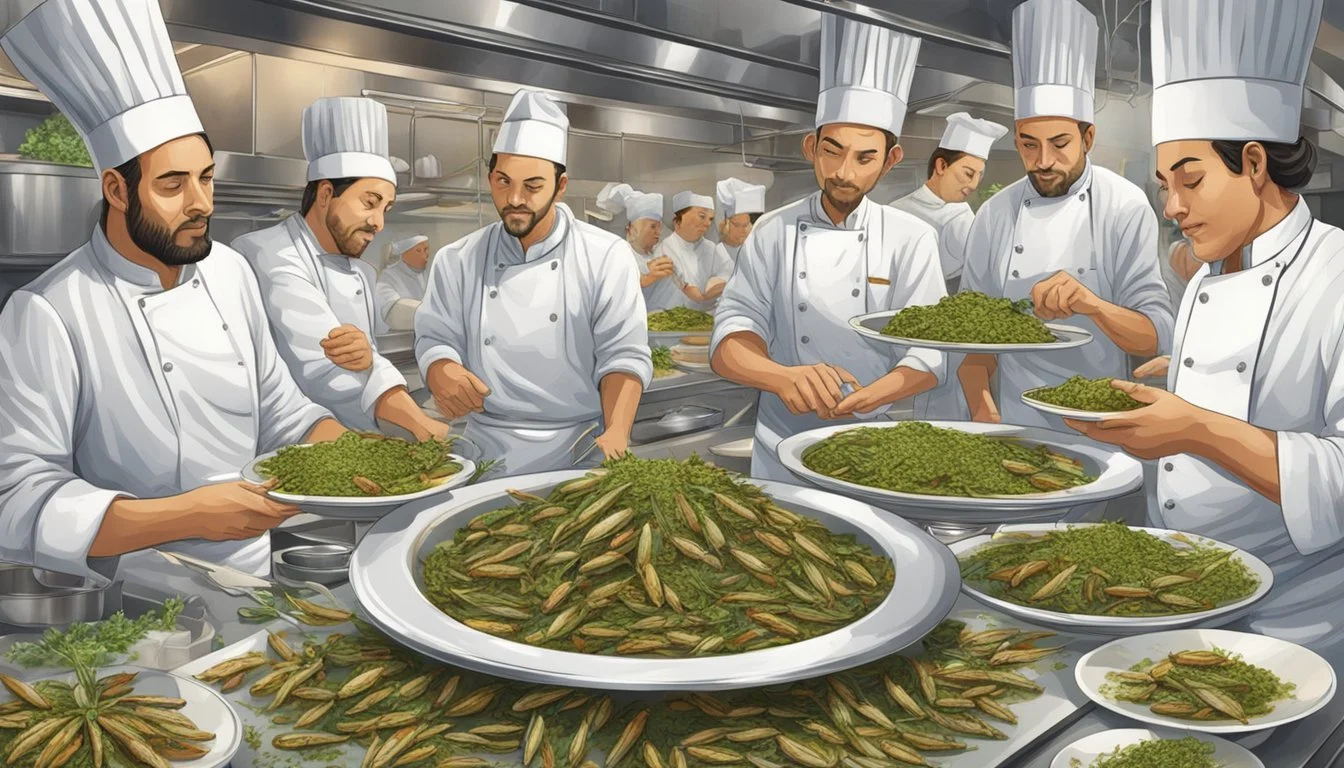Locusts The Insect Snack Revolutionizing Global Cuisine
Locusts are emerging as a novel delicacy around the world, challenging conventional culinary preferences. These insects are not just a source of sustenance in regions where they have traditionally been part of the diet, but they are steadily garnering attention as a sustainable and nutritious food option. With the capacity to transform vast quantities of vegetation into protein-rich bodies, locusts offer an efficient conversion of feed into edible weight, making them an attractive solution in the quest for alternative protein sources.
Israel has recently witnessed a surge in interest in locust consumption, particularly driven by locust emergencies that have encouraged locals to consider these insects as a viable snack option. The practice, although surprising to some, is far from new; various cultures have included locusts in their diets due to their abundance and the nutritional benefits they offer. The kosher status of locusts, certain species in particular, has also contributed to their acceptance in different communities.
As the world seeks more sustainable food sources and grapples with food security issues, the role of edible insects such as locusts is becoming increasingly significant. Innovations in farming practices are making it feasible to breed locusts on a commercial scale, which may potentially alleviate the pressure on traditional livestock and crop farming. Consequently, locusts are not only gaining popularity as a crunchy snack but are also being explored for their potential in feed and other industrial uses, demonstrating their versatility beyond the plate.
The Rising Popularity of Locusts as Food
The utilization of locusts as a food source is gaining traction globally, marked by a greater emphasis on sustainable protein sources and cultural openness to entomophagy—the practice of eating insects.
Historical and Cultural Significance
In many regions of Africa and the Middle East, including Yemen, Ethiopia, Sudan, and Egypt, locusts have been a part of traditional diets for centuries. These insects are mentioned as biblical food and are considered kosher, with consumption supported by authorities like Rabbi Ari Zivotofsky. Within these societies, eating locusts is tied to historical practices and is anchored in cultural norms.
Nutritional Benefits
Rich in protein, iron, zinc, and other essential minerals, locusts are recognized as a highly nutritious food source. They offer a leaner, eco-friendly alternative to traditional livestock and address the growing global demand for sustainable nutrition.
Culinary Innovations
Chefs worldwide are creating innovative dishes that feature locusts as the main ingredient. These include fried locusts with coriander seeds, garlic, and chilli powder, as well as locusts in a boiling broth and breaded preparations. The taste has been described as reminiscent of caramel when fried.
Acceptance and Regulation
Israel and countries in East Africa have traditionally accepted eating locusts. New regulation in regions such as the European Union has led to a greater acceptance of locusts as food. The Torah and various Judaic dietary laws endorse the consumption of specific locust species as kosher.
Global Trends and Forecast
Researchers are observing an upward trend in locust consumption in Europe, Asia, especially South Asia, and West Africa. Communication and education are influencing the perception of locusts from pests to palatable food, with forecasted growth in the inclusion of insect protein in diets globally.
Challenges to Mainstream Adoption
The success of locusts as mainstream food faces barriers including consumer perception and a lack of familiarity. Overcoming these hinges on targeted communication strategies and demonstrating the benefits of locusts in the diet, especially in Western societies.
Market and Economic Implications
The emerging market for locust-based foods has the potential to influence economies, particularly in regions plagued by locust swarms. Agriculture sectors are investigating potential economic benefits of harvesting locusts for food during infestations.
Environmental Impact and Sustainability
Heavy rains and climate change have led to larger swarms, prompting research into the usage of locusts to mitigate their impact on crops. Locusts require less land and water compared to traditional livestock and are therefore considered a more sustainable food source in light of changing temperature and vegetation patterns.
Locust Infestations: Impact and Response
Locust infestations pose a significant threat to food security and economies, primarily in Africa, the Middle East, and Asia. Aggressive responses and technological advances in monitoring and control are essential.
Biology and Behavior of Locust Swarms
Locusts, especially the Desert Locust (Schistocerca gregaria), exhibit remarkable transformations from solitary to gregarious phases, forming colossal swarms that can travel up to 90 miles a day. These swarms can be comprised of billions of individuals capable of consuming vast quantities of crops.
Recent Major Locust Outbreaks
The Horn of Africa experienced a severe locust crisis in 2019-2020, with countries like Ethiopia, Somalia, and Kenya facing unprecedented swarms. Similarly, significant infestations have affected regions in India, the Arabian Peninsula, and Iran.
Economic and Agricultural Damage
Locust swarms wreak havoc on crops, threatening the livelihoods and food security of millions. The 2003-05 West African outbreak ultimately cost over $450 million to manage, highlighting the economic strain these pests can create.
Countermeasures and Pest Control
Pest control activities often involve aerial and ground spraying of pesticides. The effectiveness of these measures relies on timely deployment and the ability to cover vast geographical areas where locusts are present.
Technological Advancements in Locust Monitoring
Organizations are implementing advanced tech like real-time data collection and predictive analytics to anticipate swarm movements. This information allows for prompt and targeted pest control interventions.
International Cooperation and Aid
The Food and Agriculture Organization (FAO) of the UN coordinates international efforts in providing aid and resources for locust control, exemplified by the support extended during the recent East African outbreak.
Local Communities' Adaptation Strategies
Farmers and local communities adapt through a variety of strategies, such as changing planting cycles or diversifying crops. They also participate in early warning networks that inform about locust developments.
Edible Insects and Global Food Systems
With the world facing critical challenges in food security and nutrition, the integration of edible insects like locusts into the global food systems presents a viable, sustainable alternative to conventional livestock and farming practices. This section explores the multifaceted role of insects in mitigating food shortages, providing nutrition, influencing cultural diets, and the practicalities of mass production and regulations.
The Role of Insects in Traditional Diets
In regions of Africa and Asia, the consumption of insects, including locusts, is part of longstanding traditions and diets. They are valued not only for their availability but also for their nutritious profiles, featuring high-quality protein, vitamins, and minerals.
Potential to Alleviate Food Shortages
Edible insects hold great promise for improving food supplies. Their ability to convert feed into protein efficiently, coupled with lower land and water requirements, make them an attractive option for bolstering food security, especially in areas prone to shortages.
Insects as an Alternative Protein Source
With a protein content that can be between 30% and 65% of their dry weight, insects serve as an excellent alternative protein source. The protein from insects, including amino acids, is comparable to that found in traditional livestock, making them an essential component of future dietary solutions.
Cultural Acceptance and Dietary Changes
The adoption of insects as food requires shifting cultural perceptions and dietary habits. While some cultures embrace eating insects, others may initially view it with reluctance. The transition to insects as a staple relies on education, exposure, and culinary innovation.
Challenges in Farming and Mass Production
Scaling up insect farming to meet global demand poses several challenges:
Ensuring consistent, quality feed for the insects
Developing standardized farming practices
Adhering to regulations for sustainable production
Food Safety and Quality Control Standards
To integrate insects into the food system, stringent quality control and food safety standards are essential. This includes regulations on farming methods, handling, processing, and storage to ensure the end product is safe and nutritious.
Invasive Species and Ecosystem Balance
While insects like locusts are seen as potential food sources, their swarming behavior can disrupt ecosystems and agricultural systems. Careful management is crucial:
Controlling swarms to prevent them from becoming invasive
Using targeted, eco-friendly pesticides when necessary
Maintaining balance within local ecosystems to prevent overexploitation



